Andrew Chevallier
See book keywords and concepts |
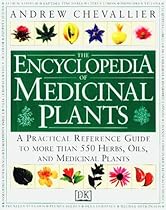 In traditional chinese medicine, qi is the primal energy that maintains life and health. In Ayurveda, it is prana, and in the Western tradition, Hippocrates writes about "vis medicatrix naturae" or the healing power of nature, while modern Western medical herbalists and homeopaths use the term "vital force."
The importance of the vital force was diminished in the West by the philosophy of Rene Descartes (1596-1650).This French mathematician divided the world into body and mind, nature and ideas. In traditional chinese medicine, qi is the primal energy that maintains life and health. In Ayurveda, it is prana, and in the Western tradition, Hippocrates writes about "vis medicatrix naturae" or the healing power of nature, while modern Western medical herbalists and homeopaths use the term "vital force."
The importance of the vital force was diminished in the West by the philosophy of Rene Descartes (1596-1650).This French mathematician divided the world into body and mind, nature and ideas. |
Berkeley Holistic Health Center and Shepherd Bliss
See book keywords and concepts |
| Complete and self-contained, traditional chinese medicine is incapable of assimilating anything that challenges its fundamental assumptions. New ideas and substances can be identified and even incorporated, but they can never expand or transform the fundamental matrix. So, Vitamin B12 is very Yang and penicillin is very Yin, but there is nothing beyond Yin and Yang.
At first glance, Western medicine seems equally impervious to alternate modes of perception. |
Sheldon Saul Hendler and David Rorvik
See book keywords and concepts |
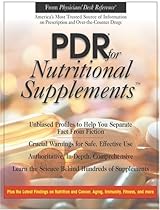 Lycium chinese Mill, also known as Chinese boxthorn, is used in traditional chinese medicine for the treatment of a number of disorders, including visual problems.
Lutein and zeaxanthin belong to the xanthophyll class of carotenoids, also known as oxycarotenoids. The xanthophylls, which in addition to lutein and zeaxanthin, include alpha-and beta-cryptoxanthin, contain hydroxyl groups. This makes them more polar than carotenoids, such as beta-carotene and lycopene, which do not contain oxygen. Lycium chinese Mill, also known as Chinese boxthorn, is used in traditional chinese medicine for the treatment of a number of disorders, including visual problems.
Lutein and zeaxanthin belong to the xanthophyll class of carotenoids, also known as oxycarotenoids. The xanthophylls, which in addition to lutein and zeaxanthin, include alpha-and beta-cryptoxanthin, contain hydroxyl groups. This makes them more polar than carotenoids, such as beta-carotene and lycopene, which do not contain oxygen. |
Berkeley Holistic Health Center and Shepherd Bliss
See book keywords and concepts |
| Meridian-Based Energy Therapies
These bodywork styles are derived from traditional chinese medicine, which postulates that electromagnetic life energy ("ch'i" in Chinese, "ki" in Japanese) flows along invisible body pathways, or meridians, and that illness occurs when energy becomes blocked at specific pressure points.
Meridian-based healers practice a variety of approaches based on acupressure (acupuncture with finger pressure instead of needles) to unblock energy paths by manipulating the pressure points. This returns the body to proper balance and health.
Shiatsu. |
Rebecca Wood
See book keywords and concepts |
 Refer to the bibliography for sources of more detailed information concerning traditional chinese medicine and Ayurveda.) If any of these models is too unscientific for you, consider it a poetic device and digest it a bit at a time. Or bypass it entirely. A year from now you might consider reconsidering it.
Whole Foods
Favoring whole, intact foods supports optimum health. Fragmented foods, even whole wheat flour as compared to the whole wheat berry itself, impart less energy. Eating integral foods that are capable of regenerating themselves supports our own regeneration. Refer to the bibliography for sources of more detailed information concerning traditional chinese medicine and Ayurveda.) If any of these models is too unscientific for you, consider it a poetic device and digest it a bit at a time. Or bypass it entirely. A year from now you might consider reconsidering it.
Whole Foods
Favoring whole, intact foods supports optimum health. Fragmented foods, even whole wheat flour as compared to the whole wheat berry itself, impart less energy. Eating integral foods that are capable of regenerating themselves supports our own regeneration. |
David Heber, M.D., Ph.D.
See book keywords and concepts |
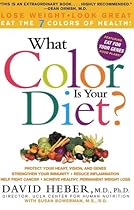 This is documented in the oldest existing written accounts of traditional chinese medicine. In Shen Nung's Materia Medica, written in a.d. 196, it is called "a tonic to the five viscera: quieting the spirits, establishing the soul, allaying fear, expelling evil effluvia, brightening the eyes, opening the heart, benefitting the understanding. ..." Not a bad prescription for our modern lives. A family of at least thirteen different gin-senosides are believed to be the active ingredients. This is documented in the oldest existing written accounts of traditional chinese medicine. In Shen Nung's Materia Medica, written in a.d. 196, it is called "a tonic to the five viscera: quieting the spirits, establishing the soul, allaying fear, expelling evil effluvia, brightening the eyes, opening the heart, benefitting the understanding. ..." Not a bad prescription for our modern lives. A family of at least thirteen different gin-senosides are believed to be the active ingredients. |
| It is used in traditional chinese medicine as a treatment for arthritis, bronchitis, lung ailments, high blood pressure, and high cholesterol, but it is not accorded the same status as panax ginseng. The usual dose is 150 to 300 milligrams twice a day of a standardized 10 to 1 root extract containing 0.8 percent eleutherosides.
Garlic
Garlic is in the lily family, and is considered a food, a spice, and a medicinal herb. Modern garlic probably originated from its wild ancestor in central Asia. It has been cultivated for over five thousand years. As early as 3200 B.C. |
Kenny Ausubel
See book keywords and concepts |
 A revealing parallel is the difficulty of testing traditional chinese medicine by conventional standards. Classical Chinese medicine posits the existence of chi, a vital life energy somewhat analagous to the vis medicatrix naturae. The basis of acupuncture, for example, is to invigorate the person's chi by using small needles to stimulate a grid of meridians at highly specific points relating to bodily systems. Western medicine does not accept the existence of chi. A revealing parallel is the difficulty of testing traditional chinese medicine by conventional standards. Classical Chinese medicine posits the existence of chi, a vital life energy somewhat analagous to the vis medicatrix naturae. The basis of acupuncture, for example, is to invigorate the person's chi by using small needles to stimulate a grid of meridians at highly specific points relating to bodily systems. Western medicine does not accept the existence of chi. |
Gary Null
See book keywords and concepts |
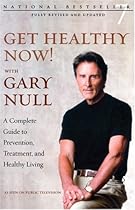 Danise Lehrer, a licensed acupuncturist and a doctor of homeopathy, noted that in traditional chinese medicine, hair is viewed as a sign of the health of the kidneys, liver, and blood. So if you have healthy hair, then you have healthy blood and healthy energy.
Dr. Danise Lehrer, a licensed acupuncturist and a doctor of homeopathy, noted that in traditional chinese medicine, hair is viewed as a sign of the health of the kidneys, liver, and blood. So if you have healthy hair, then you have healthy blood and healthy energy.
Dr. |
Ronald L. Hoffman, M.D.
See book keywords and concepts |
 A doctor practicing traditional chinese medicine may examine a patient and say, "Ah, very weak spleen," and this could be part of a life-long theme for the patient. It doesn't mean that the spleen got kicked by a horse one day and all of a sudden became a problem, but rather that the person has a constitutional problem, which can generate many different difficulties. We can apply the same principle using the high-tech diagnostic techniques of Western medicine. A doctor practicing traditional chinese medicine may examine a patient and say, "Ah, very weak spleen," and this could be part of a life-long theme for the patient. It doesn't mean that the spleen got kicked by a horse one day and all of a sudden became a problem, but rather that the person has a constitutional problem, which can generate many different difficulties. We can apply the same principle using the high-tech diagnostic techniques of Western medicine. |
Susun S. Weed
See book keywords and concepts |
 This is said to be especially effective against in situ cancers.
• traditional chinese medicine has many formulas for helping women with breast cancer.5 Ideally, a formula is created for you individually. Some of the many nourishing herbs that might be included are astragalus, dandelion, ginseng, ginger, licorice, orange peel, self-heal, seaweed (especially fucus), and violet.
• Protein intake has been shown in laboratory studies to have a direct effect on cancer. This is said to be especially effective against in situ cancers.
• traditional chinese medicine has many formulas for helping women with breast cancer.5 Ideally, a formula is created for you individually. Some of the many nourishing herbs that might be included are astragalus, dandelion, ginseng, ginger, licorice, orange peel, self-heal, seaweed (especially fucus), and violet.
• Protein intake has been shown in laboratory studies to have a direct effect on cancer. |
| Seek out practitioners of traditional chinese medicine, homeopathy, naturopathy, or medical herbalism for alternatives to drugs.
• In a study of 34,000 people who were at normal or low risk of developing cancer, those who had allergies were one-third more likely to develop cancer than those who reported freedom from allergies. Those with asthma were one-fifth more likely to be diagnosed with cancer. Antihistamines such as Claritin (loratadine), Hismanal (astemizole), and Atarax (hydrocyzine) are known to incite existing cancers to grow more quickly and more aggressively. |
| Consult a practitioner skilled in traditional chinese medicine for a formula of herbs you can brew at home if this seems right to you.
Step 5a. Use Supplements
• Six weeks of daily use of 1-2 tablespoons/15-30 ml (4-8 capsules) of flaxseed oil (rich in omega-3 fatty acids) or borage, black currant, hemp, or evening primrose seed oil (rich in gamma linoleic acid) can diminish breast lumps, especially those initiated by hormonal imbalances. Clinical studies confirm this as an effective treatment for women at all stages of breast cancer. |
Neal Barnard, M.D.
See book keywords and concepts |
 The modern history of the thunder-god vine begins in the Chinese Cultural Revolution of the late 1960s, when Chairman Mao ordered China's increasingly westernized doctors to leave the cities and become "barefoot doctors," learning about traditional chinese medicine in rural areas. Many of them were intrigued with the vine's efficacy against inflammatory diseases, including arthritis. Many started to study extracts of the vine, and in the late 1980s, controlled research studies found that it effectively reduced joint stiffness, swelling, and tenderness, compared to a placebo. The modern history of the thunder-god vine begins in the Chinese Cultural Revolution of the late 1960s, when Chairman Mao ordered China's increasingly westernized doctors to leave the cities and become "barefoot doctors," learning about traditional chinese medicine in rural areas. Many of them were intrigued with the vine's efficacy against inflammatory diseases, including arthritis. Many started to study extracts of the vine, and in the late 1980s, controlled research studies found that it effectively reduced joint stiffness, swelling, and tenderness, compared to a placebo. |
Carol Krucoff and Mitchell Krucoff, M.D.
See book keywords and concepts |
 A form of traditional chinese medicine, which recognizes the healing power of movement, qi gong is used in China to treat a variety of illnesses, including depression. Tai chi is a form of qi gong and was the one branch of the art not banned during China's cultural revolution.
The following qi gong invigorated-breathing technique, called ch'iang chuang kung, can be helpful for people with depression because it "turns off" anxious thoughts and helps people achieve a state of mental quietness known as ju ching.
Ch'iang Chuang Kung: Invigorated Breathing
1. A form of traditional chinese medicine, which recognizes the healing power of movement, qi gong is used in China to treat a variety of illnesses, including depression. Tai chi is a form of qi gong and was the one branch of the art not banned during China's cultural revolution.
The following qi gong invigorated-breathing technique, called ch'iang chuang kung, can be helpful for people with depression because it "turns off" anxious thoughts and helps people achieve a state of mental quietness known as ju ching.
Ch'iang Chuang Kung: Invigorated Breathing
1. |
| Eastern healing traditions consider these mind-body practices essential to strengthening the body's vital energy or life force—which is called chi in China, ki in Japan, and prana in India—and is the true wellspring of well-being. traditional chinese medicine holds that resistance to disease depends on the strength of the chi and its ability to flow smoothly and unimpeded throughout the body. When chi is blocked and becomes stagnant, the body's defensive energy is weakened, and illness results. |
| Eastern medical systems have long recognized the health benefits of exercise and the hazards of inactivity. traditional chinese medicine views physical activity as essential to the proper flow of chi, or life energy, throughout the body, which proponents credit with boosting health and preventing disease. When chi is blocked by problems such as poor posture, nervous tension, or sedentary existence, illness results. That's why millions of Chinese greet the dawn by performing ancient self-healing exercises designed to develop and direct the body's chi, such as tai chi and qi gong. |
Christian Ratsch
See book keywords and concepts |
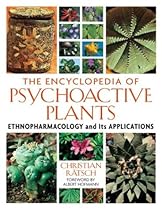 Morgan 1980, 240).
In traditional chinese medicine, the rootstock of Acorus gramineus is used to treat forgetfulness, lack of concentration, hearing difficulties, buzzing in the ears, epilepsy, mental illnesses, sensations of being full in the stomach, and gastritis (Paulus and Ding 1987,128*).
Constituents
Calamus root contains high levels of essential oil with decadienal, caryophyllene, humulene,
Calamus is an exotic plant that is also commonly referred to as sweet flag. For centuries, it was known in the West only in the form of its rhizome. Morgan 1980, 240).
In traditional chinese medicine, the rootstock of Acorus gramineus is used to treat forgetfulness, lack of concentration, hearing difficulties, buzzing in the ears, epilepsy, mental illnesses, sensations of being full in the stomach, and gastritis (Paulus and Ding 1987,128*).
Constituents
Calamus root contains high levels of essential oil with decadienal, caryophyllene, humulene,
Calamus is an exotic plant that is also commonly referred to as sweet flag. For centuries, it was known in the West only in the form of its rhizome. |
Ronald L. Hoffman, M.D.
See book keywords and concepts |
 Their training and examination requirements are considered by many to be far more rigorous than those applied to physicians —and many Asian lay acupuncturists have had the added benefit of initial training in traditional chinese medicine. (See the Resources section at the end of this book for more information.)
Trigger Point Therapy
Trigger point therapy first came into the public eye when Dr. Janet Travell used it to treat President John F. Kennedy for his chronic back pain. Their training and examination requirements are considered by many to be far more rigorous than those applied to physicians —and many Asian lay acupuncturists have had the added benefit of initial training in traditional chinese medicine. (See the Resources section at the end of this book for more information.)
Trigger Point Therapy
Trigger point therapy first came into the public eye when Dr. Janet Travell used it to treat President John F. Kennedy for his chronic back pain. |
Christian Ratsch
See book keywords and concepts |
 In
Nepal, the leaves are smoked to treat asthma and used as a sedative and narcotic (Singh 1979,190*). In traditional chinese medicine, the smoke of the seeds of Chinese henbane (lang-dang-zi) is inhaled in treatments for coughs, bronchial asthma, rheumatism, and stomach pains.
In Europe, preparations of henbane have been used for medicinal purposes since ancient times as analgesics and antispasmodics (cf. soporific sponge) to treat stomach cramps, whooping cough, toothaches, lower abdominal inflammations, neuralgia, and, in the form of cigarettes, asthma (Ratsch 1995a, 114-21*). In
Nepal, the leaves are smoked to treat asthma and used as a sedative and narcotic (Singh 1979,190*). In traditional chinese medicine, the smoke of the seeds of Chinese henbane (lang-dang-zi) is inhaled in treatments for coughs, bronchial asthma, rheumatism, and stomach pains.
In Europe, preparations of henbane have been used for medicinal purposes since ancient times as analgesics and antispasmodics (cf. soporific sponge) to treat stomach cramps, whooping cough, toothaches, lower abdominal inflammations, neuralgia, and, in the form of cigarettes, asthma (Ratsch 1995a, 114-21*). |
David Hoffman, FNIMH, AHG
See book keywords and concepts |
 Chinese medicine. Recent pharmacological research shows it to have a range of immunological activities.2 In spite of all this, however, transplant issues are inappropriate for phytotherapeutic treatment.
Where does all of this leave the phytotherapist? What actions or specific herbs are indicated for these conditions? Western herbalism seems to have got itself tied in knots around the word immune, and both professionals and nonprofessionals are showing symptoms of conceptual overload. Appropriate remedies for immune system problems must be selected on the basis of individual need. Chinese medicine. Recent pharmacological research shows it to have a range of immunological activities.2 In spite of all this, however, transplant issues are inappropriate for phytotherapeutic treatment.
Where does all of this leave the phytotherapist? What actions or specific herbs are indicated for these conditions? Western herbalism seems to have got itself tied in knots around the word immune, and both professionals and nonprofessionals are showing symptoms of conceptual overload. Appropriate remedies for immune system problems must be selected on the basis of individual need. |
Sandra Ingerman
See book keywords and concepts |
 Prayers of the Christians, Hebrews, and Moslems end with the word amen, and Daniel Reid, a leading Western authority on traditional chinese medicine and Taoist healing practices, states in Harnessing the Power of the Universe that scholars believe amen is a direct derivative of this ancient Sanskrit syllable.3 Ahmed Abdelmawgood Fayed, Egyptologist and lecturer, says that for the Hebrews, Moslems, and Christians, the translation of amen is "the invisible god." Herein lies the connection.
We have looked at how our attitudes and thoughts shape our world. Prayers of the Christians, Hebrews, and Moslems end with the word amen, and Daniel Reid, a leading Western authority on traditional chinese medicine and Taoist healing practices, states in Harnessing the Power of the Universe that scholars believe amen is a direct derivative of this ancient Sanskrit syllable.3 Ahmed Abdelmawgood Fayed, Egyptologist and lecturer, says that for the Hebrews, Moslems, and Christians, the translation of amen is "the invisible god." Herein lies the connection.
We have looked at how our attitudes and thoughts shape our world. |
Bill Gottlieb
See book keywords and concepts |
 These basic human impulses—to touch, to heal—were combined in China with the principles of traditional chinese medicine, which has as its original text the nearly 4,000-year-old Yellow Emperor's Classic of Internal Medicine. In that text, and over the next two millennia, Chinese doctors discovered a system of channels and points on the body that, if correctly touched or stimulated, would relieve pain and speed healing.
The traditional Chinese doctors said these channels, called meridians, were the invisible wires that conducted the body's chi, or energy. These basic human impulses—to touch, to heal—were combined in China with the principles of traditional chinese medicine, which has as its original text the nearly 4,000-year-old Yellow Emperor's Classic of Internal Medicine. In that text, and over the next two millennia, Chinese doctors discovered a system of channels and points on the body that, if correctly touched or stimulated, would relieve pain and speed healing.
The traditional Chinese doctors said these channels, called meridians, were the invisible wires that conducted the body's chi, or energy. |
| The goal of traditional chinese medicine was to restore chi to a state of balance, and acupressure (along with diet, herbs, deep breathing, gentle exercises and other methods) was one of its techniques.
"If a person is totally healthy—mentally, emotionally and physically—energy will flow through the body freely, like electricity is conducted through circuits," says Dayton. "But none of us is totally healthy. We all experience disease, injury and emotional trauma. And there are environmental assaults, too, such as air pollution and noise. |
Richard Leviton
See book keywords and concepts |
 Acupuncture, which is part of traditional chinese medicine, has a traceable history of about 5,000 years; homeopathy has a 200-year documented history; reflexology and color and music therapy were practiced in classical Greece, and even Egypt.
Naturopathy, as an umbrella category for a variety of disciplines, derives from the mid-nineteenth-century hydrotherapy spas and herbal sanitariums—the nature cure or Naturheilkunde—of Central Europe run by the Naturartz, the nature doctor, such as the Swiss priest/healer Sebastian Kneipp (1824-1897). Acupuncture, which is part of traditional chinese medicine, has a traceable history of about 5,000 years; homeopathy has a 200-year documented history; reflexology and color and music therapy were practiced in classical Greece, and even Egypt.
Naturopathy, as an umbrella category for a variety of disciplines, derives from the mid-nineteenth-century hydrotherapy spas and herbal sanitariums—the nature cure or Naturheilkunde—of Central Europe run by the Naturartz, the nature doctor, such as the Swiss priest/healer Sebastian Kneipp (1824-1897). |
Andrew Chevallier
See book keywords and concepts |
 It had one significant difference, though: its use in traditional chinese medicine for treating malaria. Research has now vindicated this traditional use, revealing that qing hao prevents and cures malaria and is relatively free from side effects. Extracts of qing hao are currently being used in the tropics as an affordable and effective antimalarial. key actions
¦ Bitter
¦ Reduces fever
¦ Antimalarial
¦ Antibiotic research
¦ Chinese research Qing hao was extensively researched in China, especially in Guangzhou, in the 1980s. It had one significant difference, though: its use in traditional chinese medicine for treating malaria. Research has now vindicated this traditional use, revealing that qing hao prevents and cures malaria and is relatively free from side effects. Extracts of qing hao are currently being used in the tropics as an affordable and effective antimalarial. key actions
¦ Bitter
¦ Reduces fever
¦ Antimalarial
¦ Antibiotic research
¦ Chinese research Qing hao was extensively researched in China, especially in Guangzhou, in the 1980s. |
| Related Species
A number of Cimicifuga species are used in traditional chinese medicine, including sheng ma (C. dahuricd) and C. foetida. They are thought to "clear heat" and relieve toxicity and are used to treat asthma, headaches, and measles, among other conditions.
Key Constituents
¦ Triterpene glycosides (actein, cimicifugoside)
¦ Isoflavones (formononetin)
¦ Isoferulic acid
¦ Salicylic acid
¦ Tannins
¦ Resin
Key Actions
¦ Promotes menstrual flow
¦ Antirheumatic
¦ Expectorant
¦ Sedative
Research
¦ Menopause herb Research has confirmed the validity of traditional knowledge. |
Richard Gerber, M.D.
See book keywords and concepts |
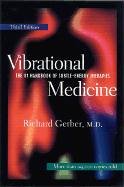 Produces a series of five CD's that heals according to the five elements of traditional chinese medicine (fire, earth, metal, water, and wood). Each elemental CD is thought to rebalance different organs and parts of the body. They also produce a chakra CD series that produces a balancing and revitalizing treatment for the whole chakra system. Feng Shui CD is said to clear out bad memories and negative energies from work and living spaces. Distributed by: Top Health, Torsgatan 59, 113 37 Stockholm, Sweden Website: www.musicacupuncture.com E-mail: top.health@swipnet. Produces a series of five CD's that heals according to the five elements of traditional chinese medicine (fire, earth, metal, water, and wood). Each elemental CD is thought to rebalance different organs and parts of the body. They also produce a chakra CD series that produces a balancing and revitalizing treatment for the whole chakra system. Feng Shui CD is said to clear out bad memories and negative energies from work and living spaces. Distributed by: Top Health, Torsgatan 59, 113 37 Stockholm, Sweden Website: www.musicacupuncture.com E-mail: top.health@swipnet. |
Ronald L. Hoffman, M.D.
See book keywords and concepts |
 For example, traditional chinese medicine looks at excess anger as arising out of an unbalanced liver function. This allows "liver energy" to rise into the upper reaches of the body, where it is thought to cause eye problems and dry skin as well as emotional imbalance. The Chinese conception of "heart imbalance," to give another example, is associated with insomnia, depression, and feelings of hopelessness. In fact, new studies link hopelessness with a higher risk of heart attack. For example, traditional chinese medicine looks at excess anger as arising out of an unbalanced liver function. This allows "liver energy" to rise into the upper reaches of the body, where it is thought to cause eye problems and dry skin as well as emotional imbalance. The Chinese conception of "heart imbalance," to give another example, is associated with insomnia, depression, and feelings of hopelessness. In fact, new studies link hopelessness with a higher risk of heart attack. |
John Heinerman
See book keywords and concepts |
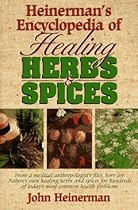 Now a researcher from the Institute of Chinese Materia Medica of the China Academy of traditional chinese medicine, who has been perusing ancient medical texts in search of new antimalarial drugs, decided to find out if soaking this wormwood had been done to avoid the loss of antimalarial properties by boiling or brewing it instead. She and her colleagues not only proved this to be a fact, but also were able to actually test the herb on humans afflicted with the malaria parasites. The clinical results turned out to be very good. Now a researcher from the Institute of Chinese Materia Medica of the China Academy of traditional chinese medicine, who has been perusing ancient medical texts in search of new antimalarial drugs, decided to find out if soaking this wormwood had been done to avoid the loss of antimalarial properties by boiling or brewing it instead. She and her colleagues not only proved this to be a fact, but also were able to actually test the herb on humans afflicted with the malaria parasites. The clinical results turned out to be very good. |












